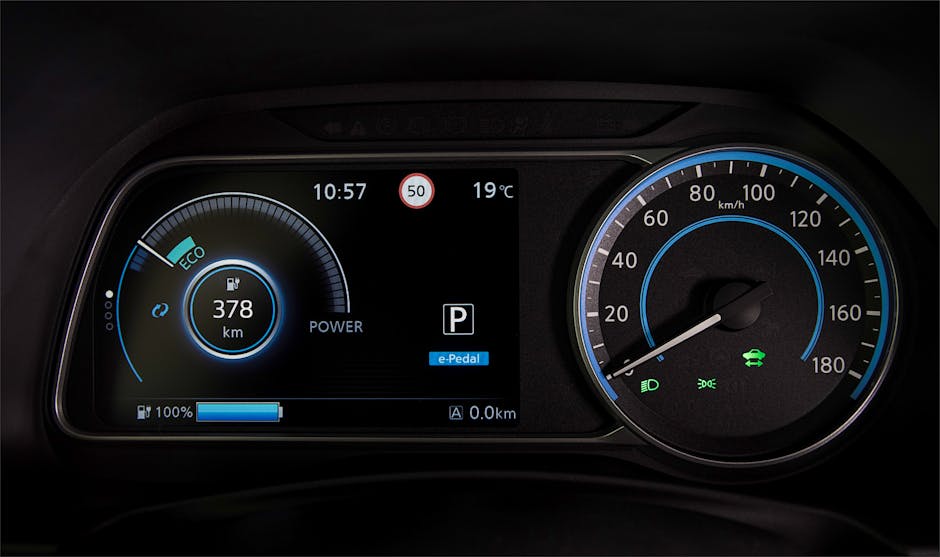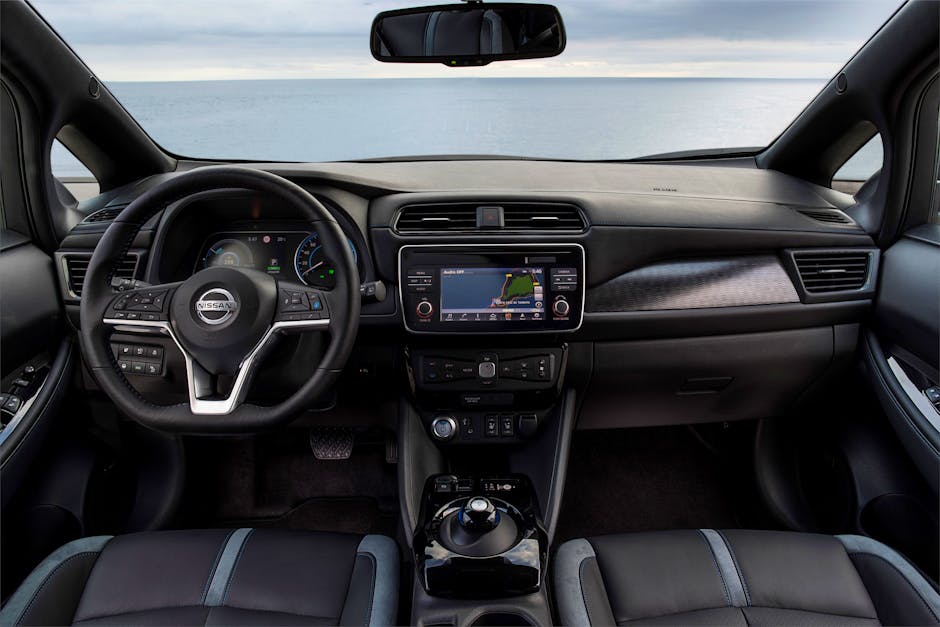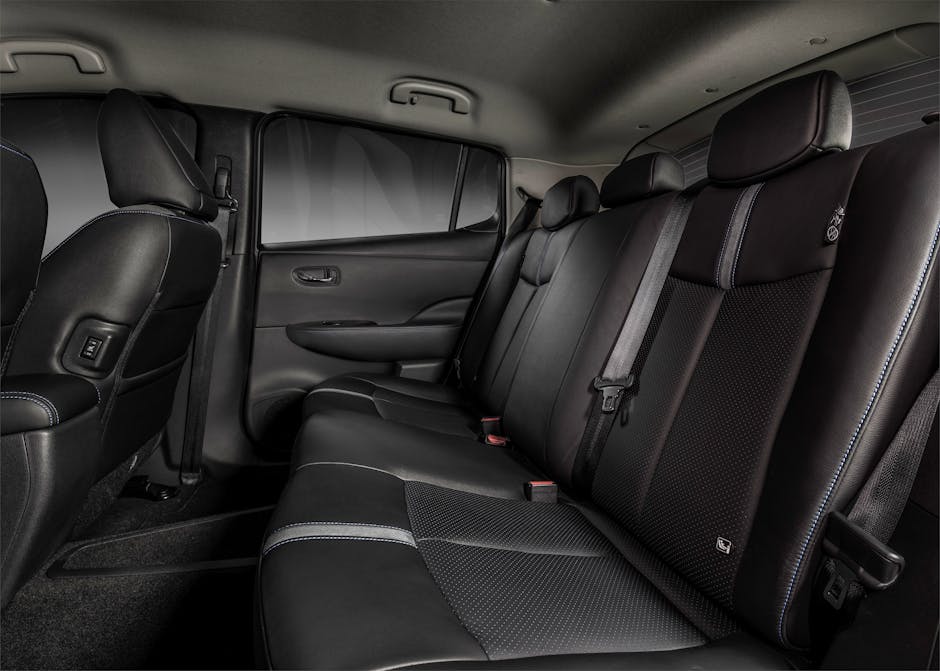The Good
- Pleasant drive
- Vastly improved looks
- Solid value
The Bad
- Unsuitable for those who do serious miles
- Boring interior
The 2018 Nissan Leaf wants to be as successful as the first-generation electric car. So just how much better is the new Leaf and does it make a strong enough case for you to ditch petrol and diesel? Ben Griffin attended the European launch in Tenerife for answers.
If the internet is to be believed, there are two types of motorist. The first is usually seen wielding a pitchfork and chasing down anyone who has a bad word to say about the good-old combustion engine. They sustain themselves on the sound of a V8 and find the idea of efficiency painfully unappealing.
The second type, meanwhile, sits around a camp fire hugging trees and crying because polar bears have lost another inch of their icy abode. They tell everyone how much electricity they saved by sticking solar panels on their roof and spend most of the day in the dark to save power.
Obviously we have liberally applied hyperbole, but the truth is that most people instantly dismiss the idea of going electric. That is a shame because, assuming the energy source used to charge a car is green (eco-friendly, that is, and not highly irradiated) going from A to B is as clean as it gets. It typically works out cheaper in the long term, too, not just because of the cost of electric is less than fossil fuels but also because there are far fewer parts in an electric motor to go wrong.
You would assume, then, that the Leaf sold brilliantly. In fairness, it did (for any car, not just electric) because more than 300,000 cars found themselves owners worldwide. Nissan claims it actually had to turn down a few thousand orders because of ending production a little too soon.
Being the first to the EV punch has its benefits, but the old Leaf had little competition in 2011. A Tesla Model S, which arrived a year later, had much better looks and a considerably longer range, but you paid for the privilege – a price way beyond your average wannabe EV owner.
Now, though, the more affordable Tesla Model 3 looms (well, when production issues are ironed out), plus there is stiffer competition from the VW E-Golf, E-Up, Renault Zoe, Toyota Prius and Hyundai Ioniq Electric, to name a few. To maintain dominance will be much more difficult, despite the fact that, through improvements to the UK’s charging infrastructure, electric cars are becoming easier to live with.
The thing is, the new Leaf is vastly superior in all but one area where it matters. Turns out, Leaf is also an acronym, which stands for: Leading Environmentally-Friendly Affordable Family Car. Pithier than LEFAFC, it must be said.
So what is new to the 2018 Nissan Leaf, is it bearable to drive and do you no longer need to bleach your eyes after seeing one? Ben Griffin headed to an area of Tenerife covered with wind turbines to find out, as part of his first drive.
2018 Nissan Leaf: What is new?

You need only look at the photos to see Nissan has turned the Leaf from looking like the motoring equivalent of a stair lift to a smart five-door hatchback. There is still a sniff of sensible about it, admittedly, but the overall design is one you would never be embarrassed to cruise about in ─ and that is vital. Electric cars need to be desirable to crack the mainstream.
The inside has been given a tidy up, too. Things like the ‘bow tie’ central button arrangement have made it over from the old car, as well as a few cheap and unsightly plastics, but the cabin feels more sturdy and was creak free during the entire drive. It is, however, rather drab and could be less cluttered.
The seats are nice and squishy, yet there is a whiff of support to keep you in place when cornering. There is still no telescopic adjustment on the steering wheel (Nissan described adding it as an orange that wasn’t worth squeezing), but only those way over six-foot will find it difficult to get comfortable.
Nissan has also added its autonomous driving technologies, known as ProPilot. ProPilot includes ProPilot Park, which offers hands-free parking, and an adaptive cruise control system that keeps you in lane if you want it to. Traffic sign recognition, intelligent lane assist, lane departure warning, pedestrian and cyclist recognition, six airbags and cross-traffic alert are fixtures on even the most basic model.
The new Leaf can be had in entry-level Visia spec (if you can cope with 16-inch steels), or Acenta (with actual 17-inch alloys), N-Connecta and, atop the range, Tekna, which provides a few neat extras such as the decent Bose sound system and leather. There is no need to go too crazy with extras, if at all, as the sense of luxury barely improves enough to warrant doing so and the payback time becomes longer. But then a top-spec Leaf is still well under £30,000.

Then there is the new E-Pedal, which sounds tacky but is actually useful. By providing extra strong levels of energy regeneration when you take your foot off the accelerator, the idea is that you never need to use the brake and more energy is sent back to the battery. It is possible to do this with the normal and ‘eco’ driving modes with good anticipation skills, as with any electric car, but the E-Pedal is the only one to apply the handbrake when you stop.
Also new is a 26 per cent increase in torque and 38 per cent increase in power from the same electric motor, so you now get 150hp and 236lb/ft (320Nm), respectively. As a result, the 0-62mph time has dropped from continental drift levels of pace to a nippy 7.9 seconds.
The new Nissan Leaf is also 15 per cent torsionally stiffer and can go from lock-to-lock in 2.6 steers instead of the old 3.2, improving maneuverability.
All Nissan Leafs in the UK come with a free wall charger, so all you need is somewhere to install it such as a garage or driveway. There is also the option of solar panels directly from Nissan, but this is an area we need to investigate more thoroughly before talking about it in detail.
Prices start from £21,990 for the Visia, £24,290 for Acenta, £25,990 for N-Connecta, £26,490 for the 2.Zero launch edition and £27,490 for the Tekna (after you factor in the UK government grant of £4,500). That means the Leaf is £1,500 cheaper than the previous generation.
2018 Nissan Leaf: What about the range and charge time?

Unlike the previous Leaf, the new Leaf comes with a 40kWh battery as standard. So even if you keep it cheap or go for all the bells and whistles, how far you can go between charges will be roughly the same (allowing for any subtle weight differences added by optional extras). The battery is exactly the same size as before, but now offers 235 miles of NEDC motoring ─ up from 155 miles.
That means the 2018 Leaf only loses out to the pricey 41kWh Renault Zoe and all Teslas, with the BMW i3 94Ah (31kWh but can be supplemented by a small petrol range extender) and Hyundai Ioniq (28kWh) trailing behind.
Nissan claims the new Leaf will go up to 168 miles on a single charge. That is according to its new WLTP testing regime, which is short for ‘Worldwide Harmonised Light Vehicle Test Procedure’ and not ‘We Like To Party’. It is designed to represent actual real-world driving situations, as opposed to highly controlled instances that paint an inaccurate picture. EPA has always been a much better portrayal of an electric vehicle’s range compared to NEDC and it appears WLTP shares that in common.
Our test route included climbing a steep volcano on a very corner-heavy road on the ascent, which noticeably drained the battery, then driving back down using the E-Pedal, which saw us regain five per cent without really trying. Other journalists saw a return of 10 per cent of energy although they were going rather slowly.
Until we drive the new Leaf in the UK, it is hard to say how accurate Nissan’s figure of 168 miles actually is, but the extra capacity will no doubt reduce the dreaded effects of range anxiety.
Charging can be done in 26 hours and 30 minutes if, heaven forbid, you use an 8A standard UK plug socket. At 10a, the time drops to a still painful 21 hours. You are best off using a 7A wall-charger (which is free, remember), as that does a full charge in seven hours and 30 minutes.
When on the go, sourcing a fast charger is best because you can top up 80 per cent in around 40 minutes – the time it takes to have a spot of lunch, check emails and stretch your legs. The in-car navigation system will account for any necessary mid-journey charging, like in the Tesla, and adjust your route accordingly.
2018 Nissan Leaf: How does it drive?

The first-generation Nissan Leaf was a bit slow and dull to drive, but it proved dependable and, based on customer satisfaction levels, very few went wrong. The new Leaf improves the situation, yet is also quieter and more refined. The balance of the chassis is excellent, as you would expect when you stick the batteries as low down as possible, and body roll is kept to palatable levels.
We drove along a mixture of dual-carriageway, country roads and bumpy car parks and at no stage did the 2018 Leaf ever feel anything but pleasant. Never exciting, either, but the instant punch of movement it provides is useful for overtaking and adds a level of entertainment.
A lack of noise can be odd at first, but enjoyable on long journeys. Only the supercharger-esque electric whine as you gain speed diminishes a peaceful cabin. There is barely any wind and road noise to ruin the show. For similar levels of serenity in a petrol or diesel, you would need to spend a lot more money.
The steering is light and provides little feedback, but it is possible to tell when entering understeer territory. A dab of the progressive brakes or letting the E-Pedal do its thing brings you back in line, not that most Leaf drivers will dabble on the edge of grip often, if at all. Driving the new Leaf is also so easy a child could do it (but probably shouldn’t).
2018 Nissan Leaf: What about practicality and infotainment?

The addition of ProPilot on the pricier models is useful for those who are really lazy. Not only will it steer the car for you when there are white lines present, it will maintain one of three distances between you and the car in front. Choosing which one is done with a button on the steering wheel.
Even better, the new Nissan Leaf will do this until completely stopped, at which point it will either pull away for you or, if it has been a long wait, you just need to press a button to re-initiate the system and away you go.
To stop drivers from putting their feet up and having a snooze, the 2018 Nissan Leaf will tell you to put your hands back on the wheel after 10 seconds when using ProPilot. Ignore that, and eventually it will dab the brakes twice in an attempt to get your attention. Leave it too long and it will come to a gentle halt to counteract the fact you may be asleep or something worse.
The ProPilot Parking system, meanwhile, will prove useful for unconfident parkers or older drivers who are very slow at the process. From what we have seen, the system works.
A first for Nissan is the fact you get both Apple CarPlay and Android Auto support, where usually it was just the former (such as on the latest Micra). So if you dislike Nissan’s slightly dated system you can connect your smartphone or tablet and use something else.

Boot space has actually been improved because of some remodelling and re-jigging EV-related components, taking the total to 435 litres without the Bose system (part of which sits just behind the rear seats on the boot floor) and 400 litres with.
Drop the rear seats and the total rises to 1,176 litres, which is competitive for a hatchback and should ensure you can lug home a lot of Ikea shopping.
As for rear leg room, you can expect the average adult to live to tell the tale. Headroom is more generous, it must be said.
2018 Nissan Leaf: Should I buy one, then?

Motorists who drive considerable distances every day are going to be hamstrung by the limitations of electric motoring. The Leaf is just not designed for that. But for most people with short commutes and somewhere to charge it at night, money could be saved. No car tax to worry about and free parking are just some of the benefits besides reducing your annual fuel bill.
Going electric will also help improve local air quality and, with a renewable energy source providing your electricity, help ease the strain on the planet. Because regardless of your views on global warming, fossil fuels are running out and electric is, in our minds, the most viable solution.
Good job, then, that the 2018 Nissan Leaf is a much nicer car than its predecessor. Nissan has focussed on the right areas to ensure you get a decent range and no odd looks as you silently roll past, with only the interior showing signs of cutbacks. First impressions are pleasing, indeed, especially as the full capacity battery and its improved range can be had for as little as £22,000.
In the future it is probably safe to assume that you will have to drive a car like the new Nissan Leaf to offset the damage caused by running your preferred gas-guzzler. It’s lucky it will be one of the most pleasant compromises you will ever have to make.
Specification
| Engine | Electric motor |
|---|---|
| Power | 147hp (150PS) |
| Torque | 263lb/ft (320Nm) at 0-3,283rpm |
| Acceleration | 0-62mph in 7.9 seconds |
| Top speed | 89mph (144km/h) |
| Emissions | 0g/km of CO2 locally |
| Range | 168 miles WLTP / 235 miles NEDC |
| Kerb weight | 1,580-1,640kg |
| Price | From £21,990 |
Leave a Reply